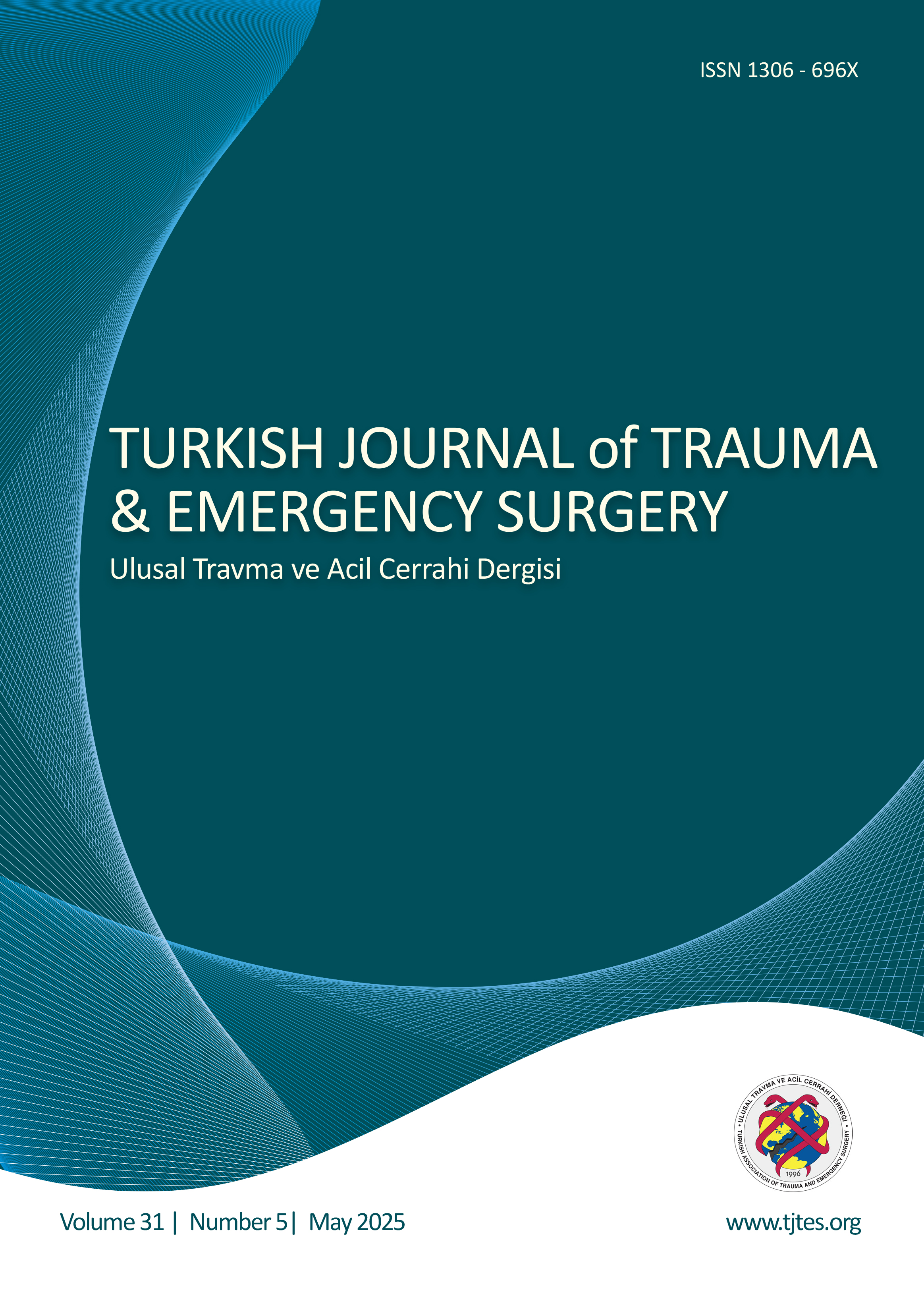Hızlı Arama
Apendiksin fiziksel özellklerinin perforasyon üzerine etkileri: İleriye yönelik klinik çalışma
Yusuf Tanrıkulu1, Gökhan Yilmaz1, Ceren Sen Tanrikulu2, Volkan Temi1, Furuzan Kokturk3, Mithat Cagsar1, Boran Yalcin11Zonguldak Atatürk Devlet Hastanesi, Genel Cerrahi Kliniği, Zonguldak2Bülent Ecevit Üniversitesi Tıp Fakültesi, Acil Tıp Anabilim Dalı, Zonguldak
3Bülent Ecevit Üniversitesi Tıp Fakültesi, Biyoistatistik Anabilim Dalı, Zonguldak
AMAÇ: Akut apandisit (AA) en yaygın görülen cerrahi acillerden birisidir ve apendiks perfore olduğunda ameliyat sonrası morbidite ve mortalite artar. Apendiks perforasyonuna yol açan faktörlerin belirlenmesi morbiditeyi azaltmada etkili olabilir. Biz akut apandisitte perforasyonla ilişkili faktörleri inceledik.
GEREÇ VE YÖNTEM: Bu çalışmada 60 hasta ele alındı ve hastalar eşit sayıda iki gruba ayrıldı: Non-perfore ve perfore grup. Biz, ameliyat öncesi dönemde hastaların vücut kitle indeksini (VKİ) ve başvuru öncesi gecikme zamanını, ameliyat esnasında apendiks pozisyonunu, apse veya sıvı varlığı ile cerrahi spesmende apendiksin duvar kalınlığını, kök ve uç çapı ile uzunluğunu karşılaştırdık.
BULGULAR: Hastaların 40ı erkek, 20si kadın olup ortanca yaş 27 idi (min-maks: 1684). Vücut kitle indeksi perfore grupta non-perfore gruptan belirgin şekilde yüksekti (p=0.039). Sıvı varlığı açısından gruplar arasında fark yok iken, apse varlığı perfore grupta daha yüksekti (p=0.017). Perfore grupta, apendiksin en yaygın görüldüğü pozisyon retroçekaldi (p=0.007). Apendiks uç çapına göre gruplar arasında fark yokken, kök çapı, duvar kalınlığı ve apendiks uzunluğu perfore grupta belirgin olarak daha yüksekti (sırasıyla p=0.041, p<0.001 ve p=0.037).
TARTIŞMA: Vücut kitle indeksi, başvuru öncesi gecikme zamanı, retroçekal yerleşimli apendiks, apse varlığı ile duvar kalınlığı, kök çapı ve apendiks uzunluğu akut apandisitte perforasyonu etkileyen risk faktörleridir.
A prospective clinical study of the effects of the physical features of the appendix on perforation
Yusuf Tanrıkulu1, Gökhan Yilmaz1, Ceren Sen Tanrikulu2, Volkan Temi1, Furuzan Kokturk3, Mithat Cagsar1, Boran Yalcin11Department Of General Surgery, Zonguldak Atatürk State Hospital, Zonguldak2Department Of Emergency Medicine, Bülent Ecevit University Faculty Of Medicine, Zonguldak
3Department Of Biostatistics, Bülent Ecevit University Faculty Of Medicine, Zonguldak
BACKGROUND: Acute appendicitis (AA) is one of the most common surgical emergencies, whosepostoperative morbidity and mortality increase significantly when the appendix perforates. The identification of factors that lead to perforation in these patients might effectively reduce morbidity. In this study, factors associated with perforation in AA were examined.
METHODS: The study included sixty patients divided into equal non-perforated and perforated groups. Preoperative body mass index (BMI) and prehospital delay of the patients, the appendix location, presence of fluid or abscesses during surgery, and the appendix wall thickness, root and end diameters, and length in the surgery specimen were compared.
RESULTS: The patients were comprised of forty males and 20 females, with a median age of 27 (range 1684) years. BMI was significantly higher in the perforated group than the non-perforated group (p=0.039). There was no difference between the groups in terms of the presence of fluid (p=0.792); the presence of abscess was higher in the perforated group (p=0.017). The most common location of the appendix was retrocecal in the perforated group (p=0.007). While there was no difference in the appendix end diameter, root diameter was significantly higher in the perforated group (p=0.041), as were wall thickness (p<0.001) and appendix length (p=0.037).
CONCLUSION: BMI, prehospital delay, a retrocecally positioned appendix, presence of an abscess, and appendix wall thickness, root diameter, and length are risk factors for perforation in AA.
Makale Dili: İngilizce




